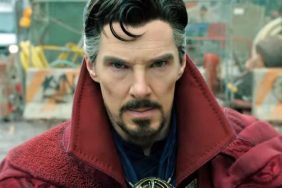It was announced by Deadline on Friday that Paramount, the owners of the ultra-lucrative and critically dismissed Transformers franchise, are going to branch out with additional sequels, and also a string of spinoff movies. The studio is meeting with the series’ director Michael Bay, and Academy Award-winning screenwriter Akiva Goldsman, to brainstorm ideas as to how to expand the Transformers series into – all together now – a Transformers cinematic universe. This follows the ultra-success Disney has had with its well-known Marvel Cinematic Universe, its plan to make spinoff movies to expand the Star Wars cinematic universe, Warner Bros.’ intention to grow a DC Comics Cinematic Universe, and even Universal’s (perhaps misguided) attempts to grow a Universal Monster Cinematic Universe. At least one of these will probably not be successful.
Although I have personally been in denial over it for years, I don’t think I can turn a blind eye any longer. The Cinematic Universe is pretty much here to stay.
I don’t like to make predictions about movie trends or the success of certain movies (I was the fool who felt that The Avengers would have one strong weekend at the box office and then fade into obscurity; what a doorknob I was), but I think the notion of the Cinematic Universe is too pervasive and too financially successful to abandon. The most lucrative film structure of the last decade has been to unearth a well-known property, and then plan an entire franchise, sometimes as many as a dozen films, ahead of time. The narrative approach to these franchises has also altered. We’re not just looking at a string of chronologically direct sequels, but a string of narratively connected, but not-directly-involved “interquels” that feed into a central canon.

Check Out: Is ‘Batman v Superman: Dawn of Justice’ a Real Movie?
This means we will not merely get a fifth Transformers film, but a fifth, sixth, seventh, and eighth, as well as several non-connected interquels in between each one. We will soon be living on a planet that has allowed over a dozen Transfomers movies to be made. And, if Disney has their way, over a hundred films in a single superhero franchise.
I have been blithely sticking my fingers in my ears over the rise supra-narratives for many years now. I think it was because, and I know I am truly alone on this, I don’t like feature films picking up this notion of vast interconnectivity. I felt that soap opera interconnectivitiy and canonical supernarratives were better suited for serialized media like TV shows, comic books, and the like. Films have, at least up until recently, been stand-alone affairs. Cinema, by its very form, is dictated by a time limit, so stories that, you know, definitively conclude will always be better suited to its structure. Now I have nothing against sequels in principle, as there are some truly wonderful sequels out there in the world that can tell new stories with older characters, turning that character’s experience into something of a saga. As a fan of slasher movies, I even have come to enjoy the bugnuts banality of a character like Jason Voorhees, a mute brute who dies and is resurrected time and again until we’re bored, yet somehow amused by all the predictability.
Movies, then, are more and more resembling TV shows. It’s becoming increasingly difficult to criticize the Disney/Marvel movies as singular standalone features because they are becoming more and more reliant on their place in the Disney/Marvel canon. With the upcoming release of Avengers: Age of Ultron in May, we’re looking at the 11th film in that series, with at least nine more definitively planned, including the incorporation of a rebooted Spider-Man. All of these films will interconnect with one another, like episodes in a vast miniseries. These Avengers movies are eschewing cinematics in favor of televised serials. I would say that they should move to TV, but Disney has already thought of that, as they will soon release TV versions of other heroes in their stockpile to tie into the movies.

Check Out: A Trailer for the Upcoming Daredevil TV Series
And while many critics see these pop culture supernarratives to be daring and bold and refreshing, there is a great irony at work when dealing with the supernarrative form: They are actually a very lazy form of writing.
Oh sure, they require a lot of thought and planning. One has to work very hard to wrangle dozens, if not hundreds, of writers to make sure their story can interlock neatly with all the others, and you have to have a long view as to where you want your stories to go. But when you’re so focused on the long view of a long, long series that you would never ever let die out for any reason, then you begin to lose sight of anything that is actually bold, daring, or original.
You can no longer kill off characters, as you need them for later episodes. No one can make any sort of gigantic change in their own ethos, as they will be need to be preserved in a relatively unchanged form for many years. Writers are no longer allowed to let stories naturally conclude, characters cannot make bold sacrifices, retire, walk away, or change themselves significantly as older cinematic structure would dictate. Writers are no longer required to really delve into the hearts of characters in a limited time. All they have to do is give the character another bland adventure on the way to the next episode. Movies are now going to be TV shows.

Check Out: Luke Evans on the Sequels to Dracula Untold
(Ironically, many recent TV shows have taken the opposite tack by ramping up sex and violence, killing off characters, and doing new, bold things with character and unexpected narrative structures. Hmm…)
Supernarratives may be the way of the future. We’re stuck with them, as audiences are eating them up without pausing for a drink. But despite the scope and the amount of planning and devotion supernarratives require from writers and fans alike, they are actually easy, simple, limited stories. Movies can no longer be about characters, themes, or anything conclusive. They can only, by necessity, be about their own structure. They are large, gorgeous, impressive buildings that the architects are not bothering to fill with anything. We live in a world where structure is beginning to outweigh artistry. Where audiences are getting a thrill over interconnectivity instead of the base storytelling. The supernarrative is beating up the narrative. We can no longer have a single story about a single person. Everything must feed into the serial.
And, in a way, that is disheartening.
Witney Seibold is a contributor to the CraveOnline Film Channel, and co-host of The B-Movies Podcast. You can follow him on “Twitter” at @WitneySeibold, where he is slowly losing his mind.






